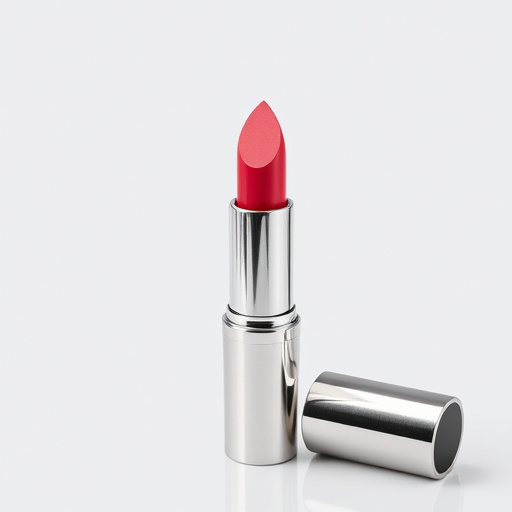Voltage, a critical electrical parameter, influences the performance of devices like the Lipstick Taser by determining its penetration through clothing materials. Thicker fabrics impede current flow, while thinner materials allow deeper penetration. The effectiveness of a Lipstick Taser depends on factors like material composition, thickness, design, and moisture content. Safety concerns arise from unexpected voltage discharge through fabric layers, emphasizing the need for proper training, understanding device limitations, and protective gear. Understanding these interactions drives innovations in personal safety devices, aiming to balance convenience and reliability for users.
Voltage penetration through thick clothing is a fascinating yet potentially dangerous phenomenon. This article explores the intricate relationship between electrical energy and various fabric barriers, with a unique focus on the ‘Lipstick Taser’ concept. We delve into the science behind voltage behavior, examining factors influencing clothing penetration, and discuss safety measures. From its origins to practical applications, understanding these dynamics is crucial in mitigating risks while exploring innovative tools like the Lipstick Taser.
- Understanding Voltage and Its Behavior
- The Lipstick Taser: A Unique Concept
- Factors Influencing Clothing Penetration
- Safety Measures and Potential Risks
- Practical Applications and Future Considerations
Understanding Voltage and Its Behavior

Voltage, a measure of electric potential difference, plays a crucial role in electrical systems and devices, including those designed for self-defense like lipsticks tasers. Understanding how voltage interacts with different materials is essential when considering its penetration through thick clothing. In simple terms, voltage seeks the path of least resistance to flow from a higher potential to a lower one. When applied to clothing, factors such as material composition and thickness influence this behavior significantly.
Thicker fabrics or materials generally pose more resistance to electrical current, causing voltage to dissipate over a larger area. This can be seen when a lipstick taser encounters heavy denim; the high resistance slows down the flow of electricity, resulting in a less concentrated discharge but still delivering a powerful shock. Conversely, thinner materials allow for easier current flow, allowing voltage to penetrate more deeply.
The Lipstick Taser: A Unique Concept

The concept of a “Lipstick Taser” is a unique twist on personal safety, offering a discreet and elegant solution for self-defense. This innovative device combines the idea of a traditional lipstick case with a powerful stun gun, designed to fit easily in one’s purse or pocket. The sleek and compact design resembles an everyday cosmetic item, allowing users to carry it without drawing unnecessary attention.
This weaponized lipstick takes advantage of modern technology, packing a significant electrical punch within its charming casing. When activated, it delivers a powerful electric current, temporarily incapacitating the assailant while providing the user with a chance to escape. The Lipstick Taser represents a fascinating fusion of fashion and functionality, appealing to those seeking an unconventional yet effective personal safety measure.
Factors Influencing Clothing Penetration

Several factors determine how effectively voltage, such as those from a lipstick taser, can penetrate through thick clothing. The material’s composition plays a significant role; for instance, dense fabrics like denim or leather may obstruct electrical current flow more than lighter, smoother materials like silk or cotton. The thickness of the garment is another crucial element; the heavier and thicker the fabric, the harder it is for the voltage to pass through.
Moreover, the design and construction of the clothing can impact penetration. Seams, pockets, and other features can either act as barriers or conduct paths for electric current. For example, a pocket could facilitate conduction if metal objects are present, potentially allowing more voltage to pass compared to a seamless, solid layer of fabric. Moisture on the skin or within the garment also influences penetration, as it can alter electrical resistance and facilitate current flow.
Safety Measures and Potential Risks

When considering the penetration of voltage through thick clothing, it’s paramount to discuss safety measures and potential risks involved. Using devices like a lipstick taser, for instance, raises concerns about unexpected discharges that could lead to severe injuries or even fatalities if the current finds its way through layers of fabric. These risks are heightened by the fact that not all clothes are equally effective at blocking electric currents.
Safety protocols must be rigorously followed when experimenting with such devices. This includes ensuring proper training, understanding device limitations, and wearing protective gear where possible. Even then, there’s a delicate balance between convenience and safety—a factor to consider in public spaces or situations where the use of a lipstick taser might draw attention or cause alarm.
Practical Applications and Future Considerations

The practical applications of voltage penetration through thick clothing are vast, with one notable example being the development of advanced self-defense tools like lipsticks tasers. These innovative devices offer individuals an extra layer of personal safety, especially in situations where traditional weapons may not be effective or accessible. By understanding how voltage can penetrate various materials, researchers and engineers can design more powerful yet compact self-defense mechanisms, ensuring that people have a means to protect themselves effectively.
Looking ahead, future considerations for this technology involve enhancing its reliability and user-friendliness. As research progresses, there’s potential to explore different fabric types and their varying electrical conductivities to optimize voltage transmission. Additionally, the integration of smart sensors and advanced materials could lead to self-defense tools that not only deliver a powerful shock but also provide real-time data on the user’s safety status, making personal security more proactive and responsive than ever before.
In conclusion, the study of voltage penetration through thick clothing has led to intriguing discoveries, particularly with innovative concepts like the lipstick taser. Understanding how factors such as material composition and thickness impact electrical conduction is key to harnessing this technology for both safety and practical applications. As research progresses, further exploration of these dynamics will pave the way for safer and more effective tools, ensuring that innovations like the lipstick taser can be utilized responsibly in various fields.
